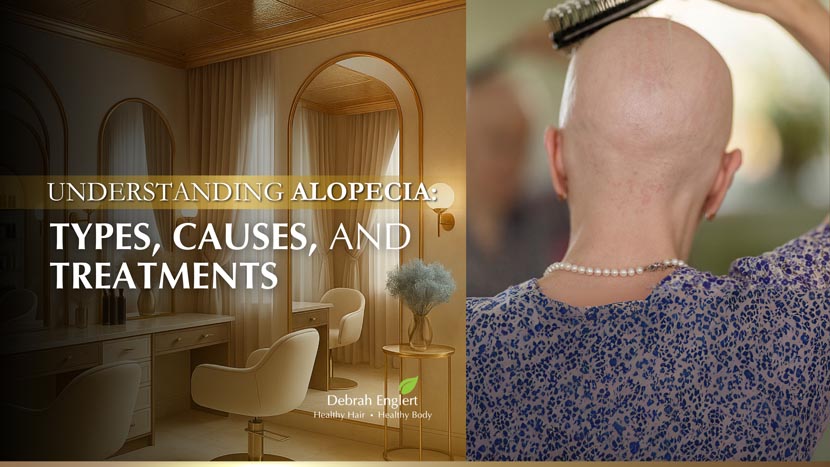UNDERSTANDING ALOPECIA: Types, Causes, and Treatments

Hair loss can feel like a mystery. One day you notice extra shedding in the shower, and before you know it, your ponytail looks thinner or bald patches appear. The truth is, “alopecia” isn’t just one condition. It’s an umbrella term for several different types of hair loss, each with its own causes and solutions.
If you’ve ever wondered whether your hair loss is “normal” or if there’s hope for regrowth, this guide is for you. Let’s break down the main forms of alopecia, what causes them, and what treatments actually make a difference.
The Main Types of Alopecia
1. Alopecia Areata
An autoimmune condition where the body mistakenly attacks hair follicles.
- Signs: Sudden patchy bald spots, usually circular.
- Who it affects: Men, women, and even children.
- Prognosis: Hair may regrow naturally, but relapses are common.
2. Androgenetic Alopecia (Male & Female Pattern Hair Loss)
The most common type, caused by genetics and hormones.
- Signs: Thinning along the crown, widening part in women, or receding hairline in men.
- Who it affects: More than 50% of men and women by age 50.
- Prognosis: Progressive without treatment, but manageable with modern solutions.
3. Traction Alopecia
Caused by consistent pulling on the hair from tight styles (ponytails, braids, extensions).
- Signs: Hair loss around the hairline or temples.
- Who it affects: Common in women with long-term styling habits.
- Prognosis: Often reversible if caught early, but scarring can make it permanent.
4. Scarring Alopecia (Cicatricial Alopecia)
A rare type where inflammation permanently damages follicles.
- Signs: Smooth, shiny patches of skin where hair no longer grows.
- Prognosis: Permanent, but hair systems or medical treatments can help.
Treatments That Work
While there’s no universal cure for alopecia, there are effective ways to manage or reverse many types.
- Topical Treatments – Minoxidil (Rogaine) encourages regrowth in certain cases.
- Prescription Medications – Finasteride (for men) or spironolactone (for women) can help with hormone-related loss.
- Steroid Injections – Often used for alopecia areata to calm immune attacks.
- Platelet-Rich Plasma (PRP) Therapy – Uses your own blood plasma to stimulate follicles.
- Laser Therapy – Low-level light therapy boosts follicle activity.
- Hair Systems & Toppers – Non-surgical, natural-looking options that provide instant coverage and confidence.
When to See a Professional
If hair loss is sudden, patchy, or emotionally overwhelming, don’t wait. A Trichologist which is a trained Hair Restoration Specialist can help identify the type of alopecia and recommend both short-term (confidence-boosting toppers) and long-term regrowth strategies.
Alopecia may feel confusing, but understanding the type you have is the first step toward taking control. With today’s science and hair restoration options, you don’t have to live in uncertainty—you have choices, and solutions are within reach.
Email us with questions at Hair@debrahenglert.com or book a virtual or in person consultation with our Hair Restoration Specialist.
